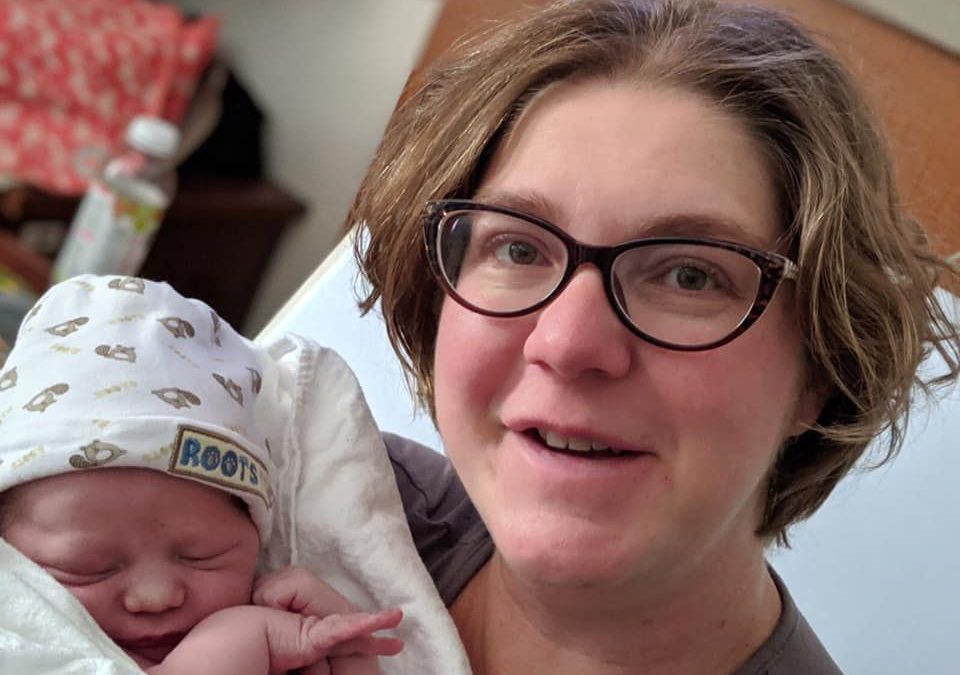So we called the midwife, and she spoke to me on the phone to check in and see how far along I was. She was at first convinced that I was in very early labour, but said OK, we will be there in a little while to check on you. And so she was very surprised to discover that I was already 6cm dilated when they arrived. They could see I was breathing deeply, I was very calm and not at all in distress. Every time that a contraction started I would practice my focused attention technique and breathe deeply. It would pass and I would enjoy the present moment in between. Please be aware, if you want to try this technique yourself that it does take practice. Your mind needs training just like your body does, I spent at least 10 hours total practicing with the app as well as little bits here and there, in between, on my own. Now that I have the skill I find myself applying it to any pain in my life that crops up. I highly recommend to anyone out there who is in pain, that they consider trying to manage the pain with meditation. I’m absolutely serious that all it takes is practice!
Pilates was definitely good grounding for me in developing this mind and body connection. In fact, in the recovery phase I’ve discovered that I am more body aware than ever. I can feel everything coming back into position, and I can feel when it’s beginning to be more balanced and working together. I can feel all the sensations of healing and it’s simply nice to be so present in my body, to be in the moment with it. I can appreciate and engage with my body more now because I’ve been through this process. I’ve never been less interested in the conventional postpartum ideals around “losing the baby weight” or “bouncing back” after birth. You know why? Because those thoughts are not relevant to me. They don’t encompass the scope of what my body is doing right now- it’s simply not important. It also doesn’t allow for how grateful I feel toward my body at this moment. It’s been on a journey through birth and postpartum, and it’s continuing to work hard now as it recovers. These kind of thoughts are placing the focus on how others view my body instead of what’s actually happening. No thanks! I’d rather not spend my time dwelling there. Instead I’m going to feel and appreciate it all without worrying about what others think. I’m going to treat it right- by exercising at my own pace, stopping and starting as I need to. By really listening to it, and recovering in my own way.
As a consequence of this experience I have begun reflecting on the idea of resistance, and how it applies more broadly to my day to day activities as well as my teaching work. I can sum it up like this: If my body is sending me pain signals I need to listen, but I also need to not resist when I feel that pain and create extra tension. I understand now that so much of how we treat our bodies is to resist and react unconsciously. I see my clients creating unnecessary tension all the time, in their shoulders or necks especially. It’s the way we are conditioned to react to the unfamiliar or the stressful. It also becomes a habit over time. An example I see often is when I ask someone to move their arm, and their shoulder goes up toward their ear and their neck stiffens up. They automatically pull back and resist what could be a gentle and easy movement. We often fight tooth and nail against the flow of our bodies. So I think, in my classes, I’m going to incorporate more mind-body meditation practice. I always did some of this, but we can definitely do more with it! The mind is the most powerful tool that we have in our lives, and it’s time that we learned how to harness that power. It’s time to become stronger in our minds, and to learn to move easily without that extra tension and automatic resistance. I look forward to developing this idea more for both myself in my own practice, and for my clients when I return in September!
Thanks for reading. Comments are always welcome!
<3
I’ve always known that Pilates has a huge mind-body connection. But what I didn’t understand until recently was just how powerful the mind can be, and have how much this can have an effect on every aspect of your life. When I found out I was pregnant this time around, I decided to spend more time and energy on my meditation practice. I’ve been meditating for about two years off and on, at home. I use an app called Headspace that I absolutely love and which taught me everythin […]


